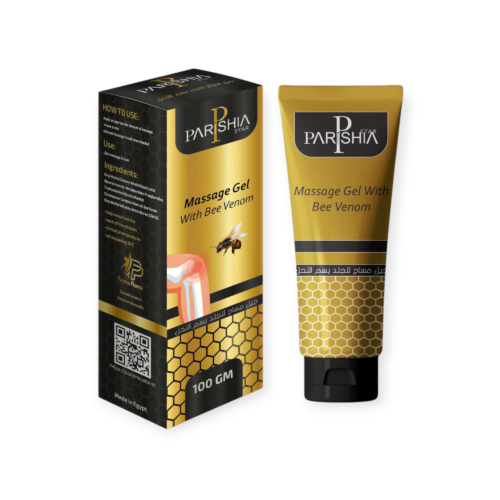

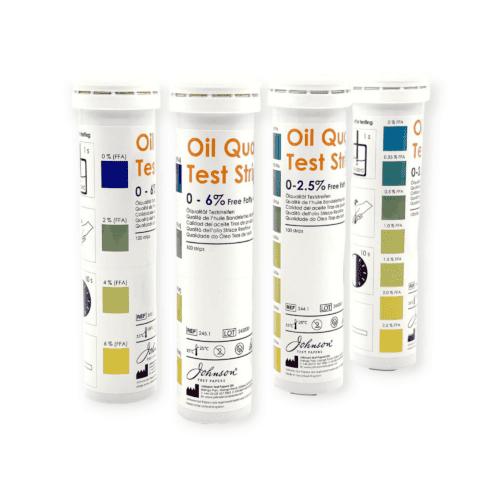
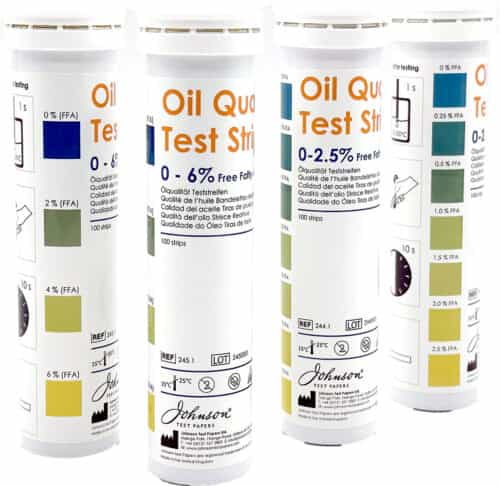
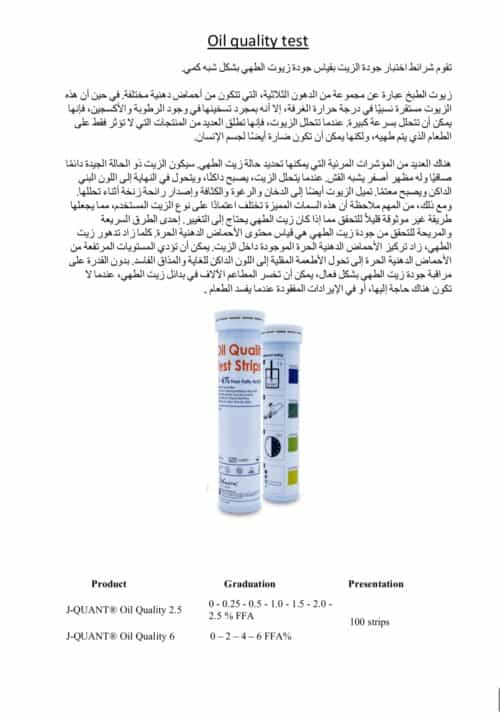
علبه 100شريط اختبار جوده زيت الطهى والطعام وقياس نسبه الأحماض الدهنية الحره ف زيت الطهي بسرعه ودقه عاليه من شركه 2.5 6 / 0 – johnson test paperJ-QUANT® Oil Quality Test Strips 0 منشأ انجلترا
EGP 3500 السعر الأصلي هو: EGP 3500.EGP 2499السعر الحالي هو: EGP 2499.
متوفر نوعين من درجات القياس
قياس من 0 إلى 2.5%
J-QUANT® Oil Quality Test Strips0-2.5% – FFA 0
0 – 0.25 – 0.5 – 1.0 – 1.5 – 2.0 – 2.5 %FFA
درجه القياس من 0 الى 6 %
J-QUANT® Oil Quality Test Strips 0-6% FFA
0 – 2 – 4 – 6 %FFA
العلبه 100 شريط اختبار منشأ انجلترا ومصرح من هيئه الدواء المصريه
| عدد القطع | سعر الجمله | تخفيض |
|---|---|---|
| 2-6 | EGP 2374 | 5% |
| 7-12 | EGP 2299 | 8% |
| 13+ | EGP 2249 | 10% |
44 متوفر في المخزون
 إضغط هنا الآن / وإشتري دلوقتي
عن طريق الواتس ؟
إضغط هنا الآن / وإشتري دلوقتي
عن طريق الواتس ؟

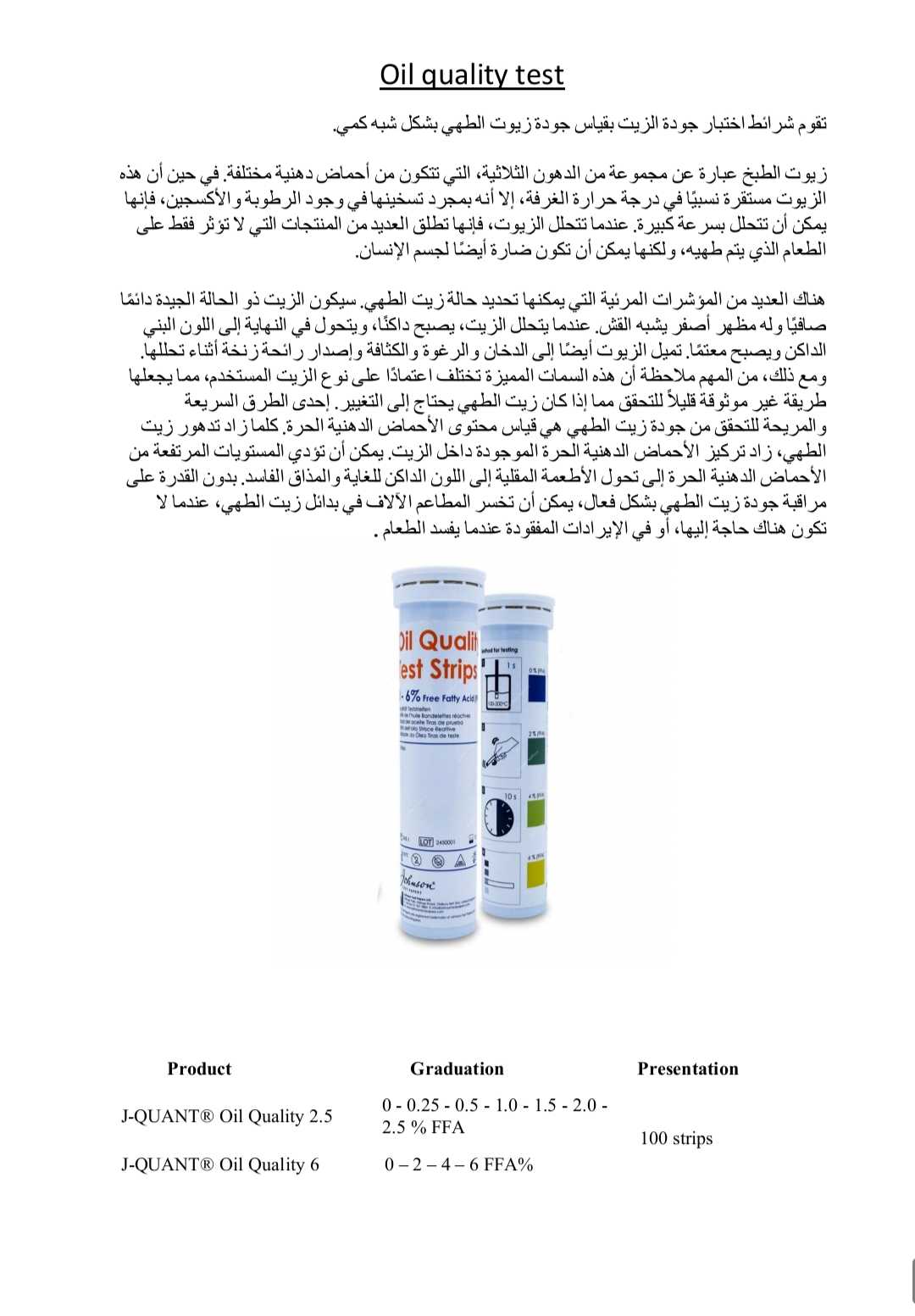
Oplus_131072
J-QUANT® Oil Quality Test Strips
BackgroundCooking oils are a collection of trigylcerides, that in turn are made up of a number of different fatty acids. Whilst these oils are relatively stable at room temperature, once heated in the presence of moisture and oxygen, they can degrade quite rapidly. As the oils start to breakdown, they release a number of by products which, not only have an effect on the food being cooked, but can also be harmful to the human body.
There a number of visual indicators that can determine the condition of the cooking oil. Good condition oil will always be clear and have a yellow strawlike appearence. As the oil breaks down, it will darken, eventually turning dark brown and becoming opaque. Oils also tend to smoke, foam, thicken and produce a rancid smell as they degrade. However, it is important to note that these characteristic features differ depending on the type of oil being used, making it a slightly unreliable way of checking whether cooking oil needs changing. A quick and convienient way of checking the quality of cooking oil is to measure the free fatty acid content. The more and more the cooking oil degrades, the higher the concentration of free fatty acid present within the oil. High levels of free fatty acid can lead to fried food which is extremely dark in colour and rancid tasting. Without being able to effectively monitor the quality of your cooking oil, restaurants can loose thousands in cooking oil replacements, when they are not needed, or in lost revenue when food is spoilt.
ApplicationThe J-QUANT® Oil Quality Test Strips 0-2.5% and 0-6% are an easy way to semi-quantitatively measure the free fatty acid con-tent of cooking oil. They require no pre-sampling and can be used directly in the cooking oil whilst hot.
Indications
- An indication of 2% free fatty acid in cooking oil shows that the break-down process has begun.
- An indication of 4% free fatty acid means that the quality of breaded foods such as chicken and fish should be checked. The oil should be discarded if unacceptable.
- An indication of 6% free fatty acid means that the quality of all other fried (battered) foods including chicken, fish and chips/fries should be checked. The oil should be discarded if unacceptable.
- If an extremely bright yellow colour is observed, then this indictaes that the free fatty acid level is much higher than 6% and the oil should be discarded immediately.
- If a clearly indication of free fatty acid build up below 2% is needed then the lower level J-QUANT® Oil 2.5 test strip is available.
داتا شيت باللغه العربيه :-
شرائط اختبار جودة الزيت J-QUANT®
الخلفية
تتكون زيوت الطهي من مجموعة من الدهون الثلاثية، والتي تتكون بدورها من عدد من الأحماض الدهنية المختلفة. وفي حين أن هذه الزيوت مستقرة نسبيًا في درجة حرارة الغرفة، إلا أنه بمجرد تسخينها في وجود الرطوبة والأكسجين، يمكن أن تتحلل بسرعة كبيرة. وعندما تبدأ الزيوت في التحلل، فإنها تطلق عددًا من المنتجات الثانوية التي لا تؤثر فقط على الطعام الذي يتم طهيه، بل يمكن أن تكون ضارة أيضًا بجسم الإنسان.
هناك عدد من المؤشرات المرئية التي يمكنها تحديد حالة زيت الطهي. سيكون الزيت في حالة جيدة دائمًا شفافًا وله مظهر أصفر يشبه القش. ومع تحلل الزيت، يصبح داكنًا، ويتحول في النهاية إلى اللون البني الداكن ويصبح معتمًا. تميل الزيوت أيضًا إلى التدخين والرغوة والتكاثف وإنتاج رائحة كريهة أثناء تحللها. ومع ذلك، من المهم ملاحظة أن هذه السمات المميزة تختلف اعتمادًا على نوع الزيت المستخدم، مما يجعلها طريقة غير موثوقة بعض الشيء للتحقق مما إذا كان زيت الطهي يحتاج إلى تغيير. الطريقة السريعة والمريحة للتحقق من جودة زيت الطهي هي قياس محتوى الأحماض الدهنية الحرة. كلما تدهور زيت الطهي أكثر فأكثر، زاد تركيز الأحماض الدهنية الحرة الموجودة داخل الزيت. يمكن أن تؤدي المستويات العالية من الأحماض الدهنية الحرة إلى قلي الطعام بلون داكن للغاية وطعم فاسد. بدون القدرة على مراقبة جودة زيت الطهي بشكل فعال، يمكن للمطاعم أن تخسر آلاف الدولارات في بدائل زيت الطهي، عندما لا تكون هناك حاجة إليها، أو في خسارة الإيرادات عندما يفسد الطعام.
التطبيق
تعتبر شرائط اختبار جودة الزيت J-QUANT® 0-2.5% و0-6% طريقة سهلة لقياس محتوى الأحماض الدهنية الحرة في زيت الطهي بشكل شبه كمي. لا تتطلب أخذ عينات مسبقة ويمكن استخدامها مباشرة في زيت الطهي أثناء تسخينه.
المؤشرات
يشير مؤشر 2% من الأحماض الدهنية الحرة في زيت الطهي إلى أن عملية التحلل قد بدأت.
يعني مؤشر 4% من الأحماض الدهنية الحرة أنه يجب فحص جودة الأطعمة المقلية مثل الدجاج والأسماك. يجب التخلص من الزيت إذا كان غير مقبول.
إن وجود نسبة 6% من الأحماض الدهنية الحرة يعني أنه يجب فحص جودة جميع الأطعمة المقلية الأخرى (المخفوقة) بما في ذلك الدجاج والأسماك والبطاطس المقلية. يجب التخلص من الزيت إذا كان غير مقبول.
إذا لوحظ لون أصفر ساطع للغاية، فهذا يشير إلى أن مستوى الأحماض الدهنية الحرة أعلى بكثير من 6% ويجب التخلص من الزيت على الفور.
إذا كانت هناك حاجة إلى وجود مؤشر واضح على تراكم الأحماض الدهنية الحرة أقل من 2%، فإن شريط اختبار J-QUANT® Oil 2.5 ذو المستوى الأقل متاح.

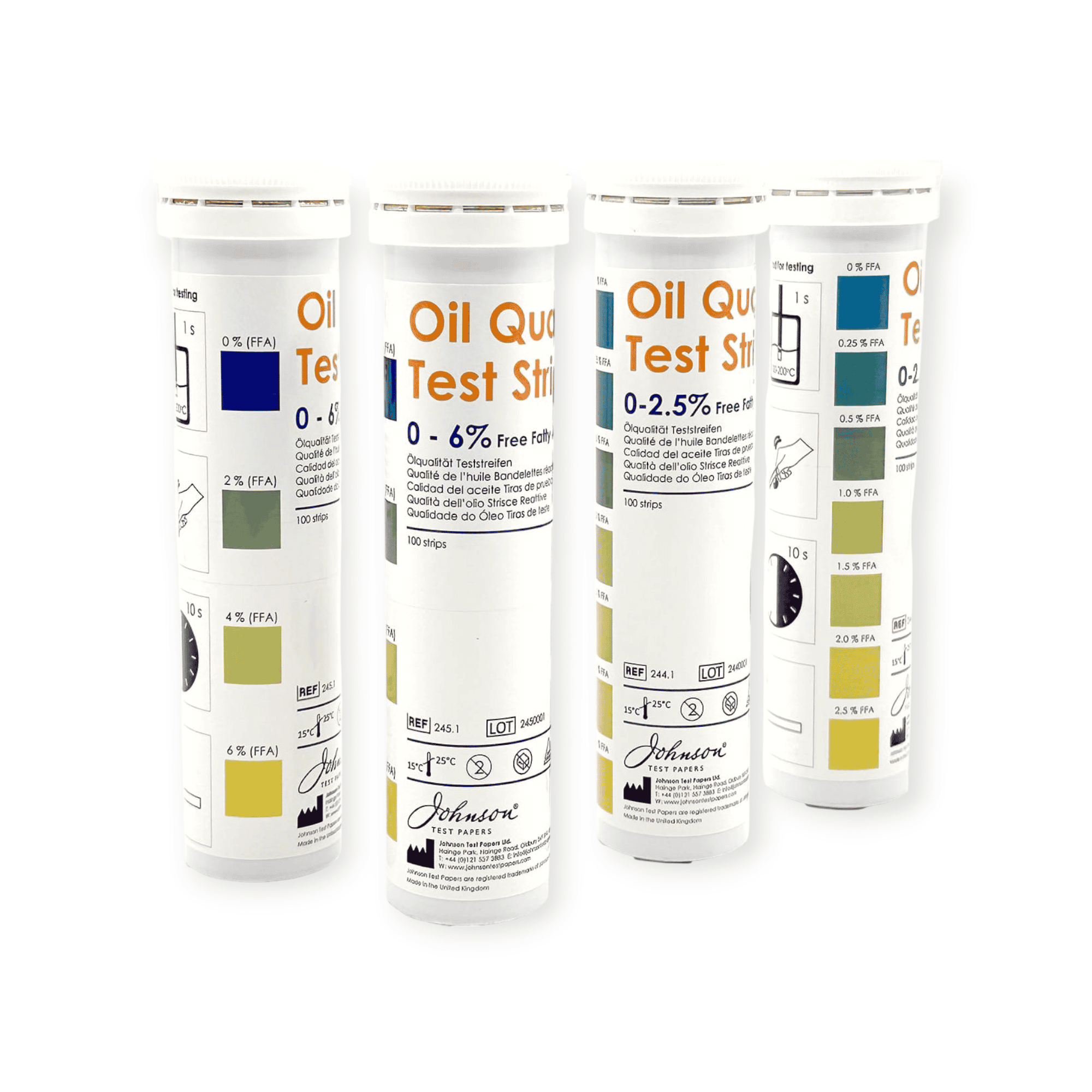

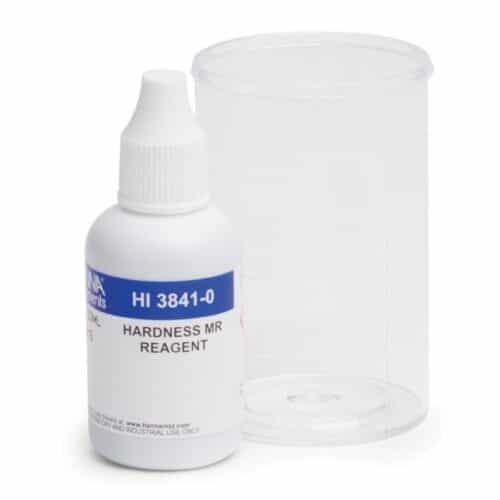
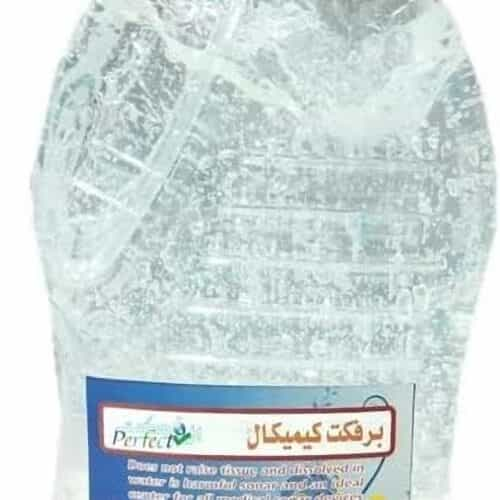
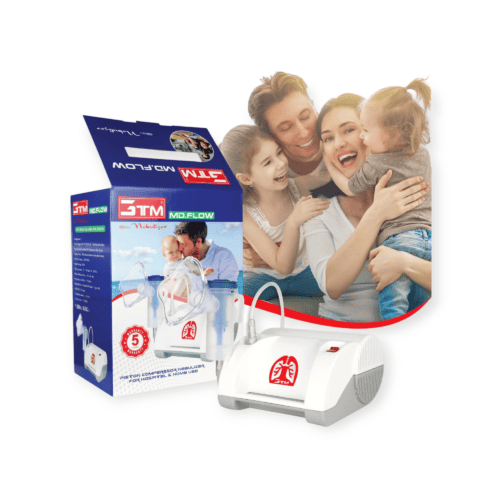
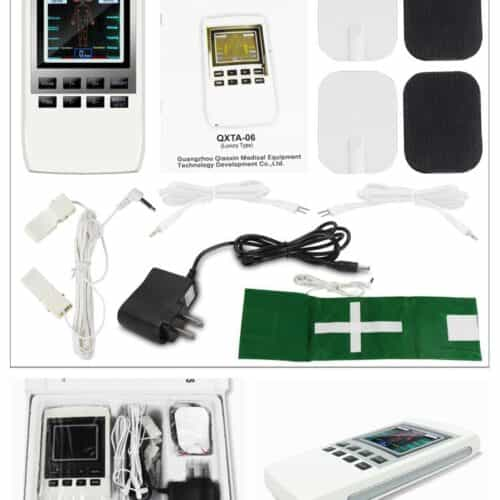
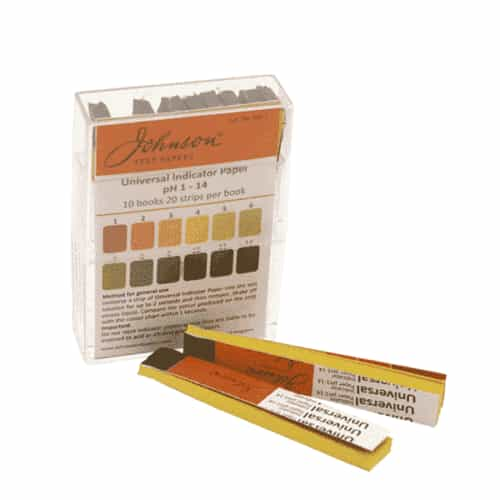
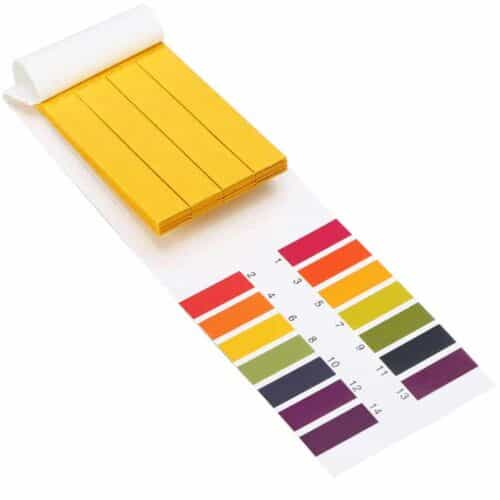
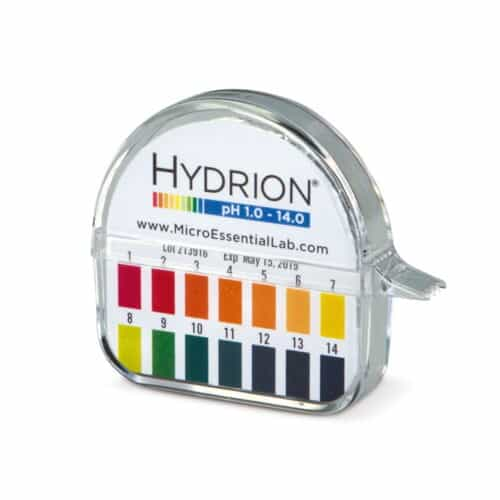
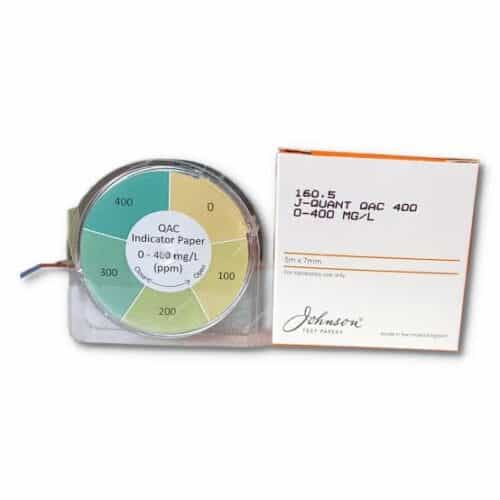
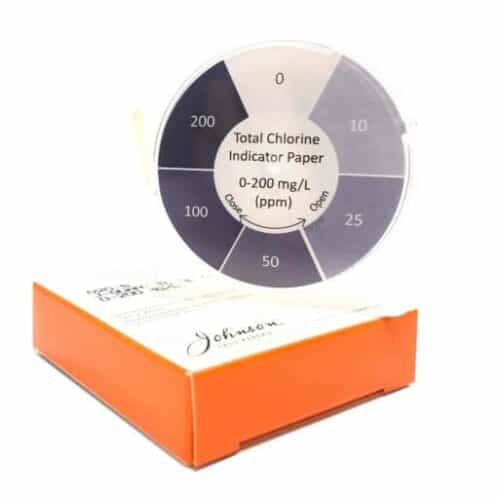
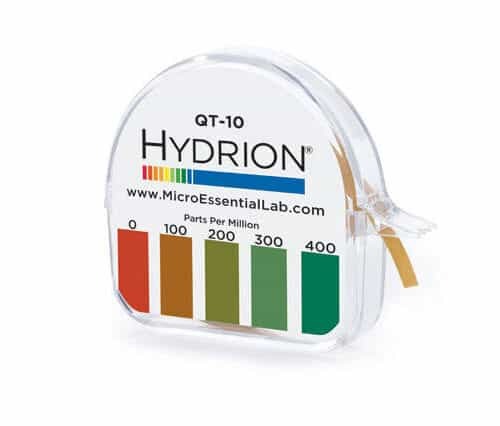
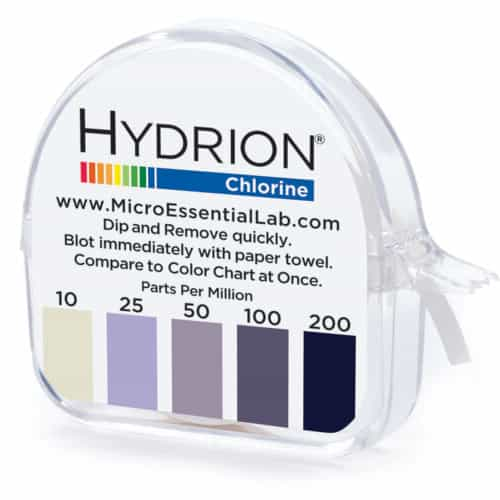
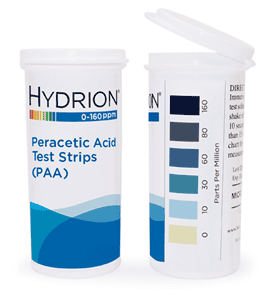
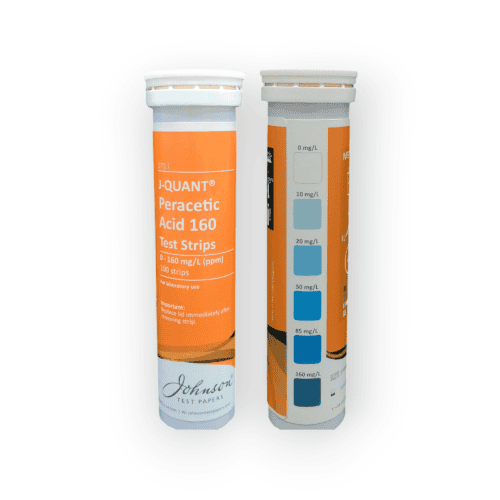
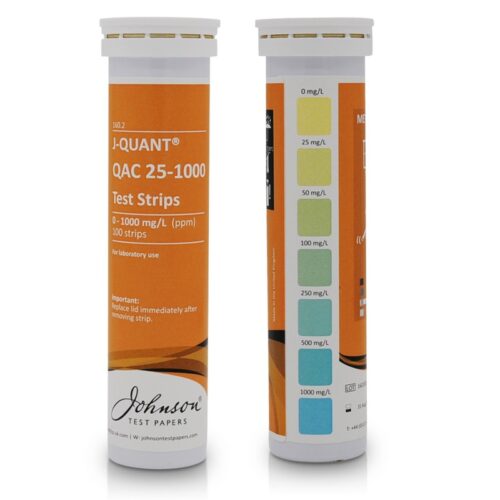
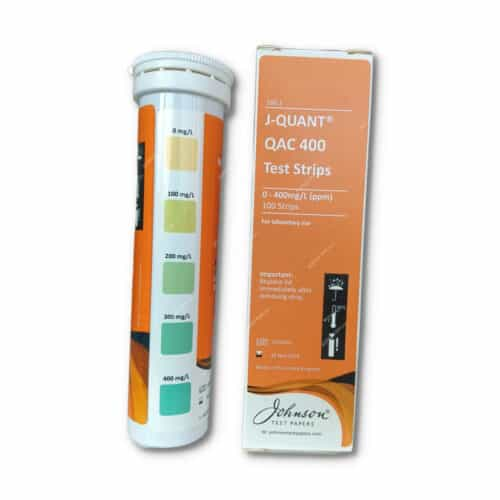
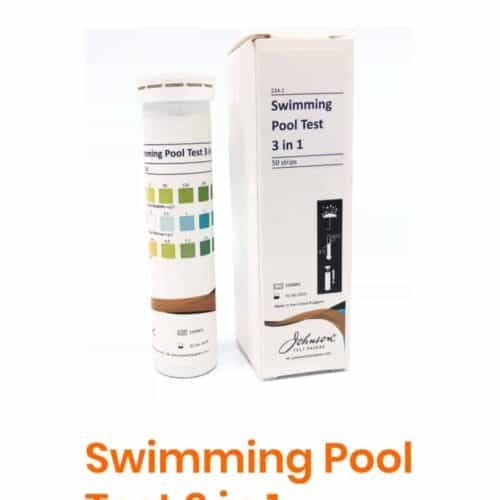

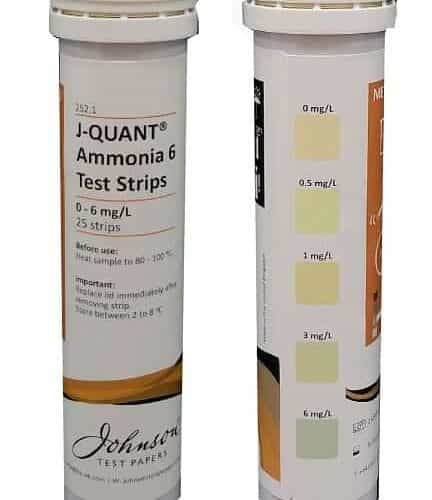
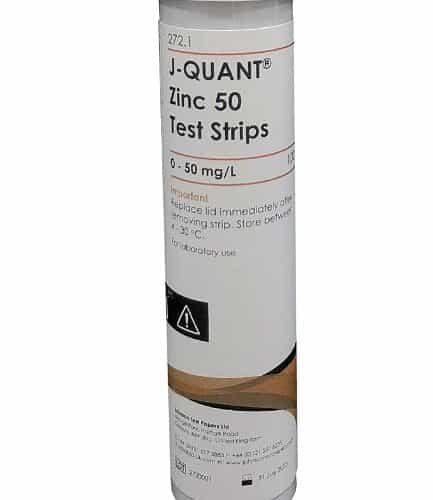
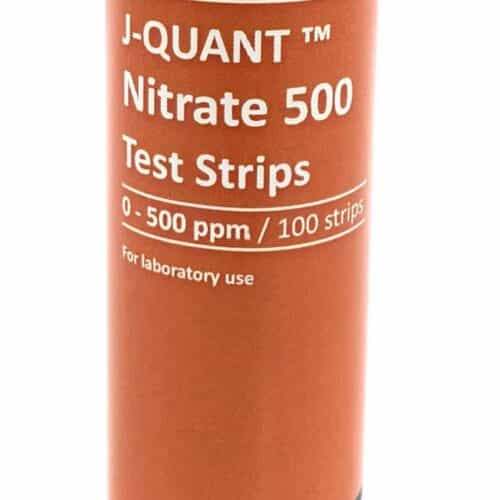
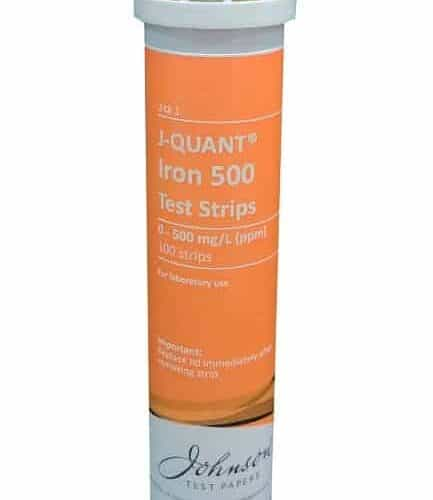

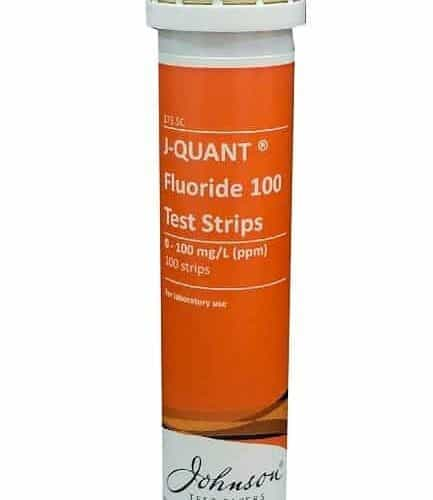
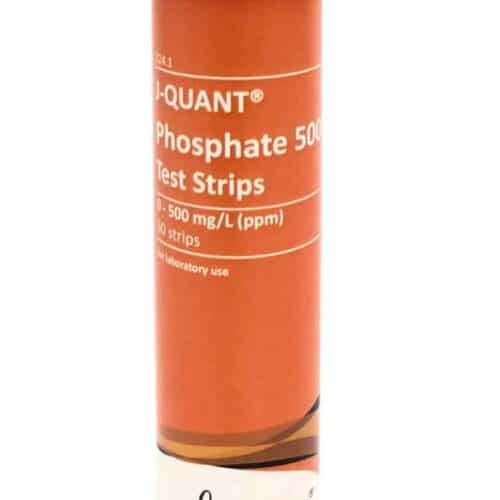
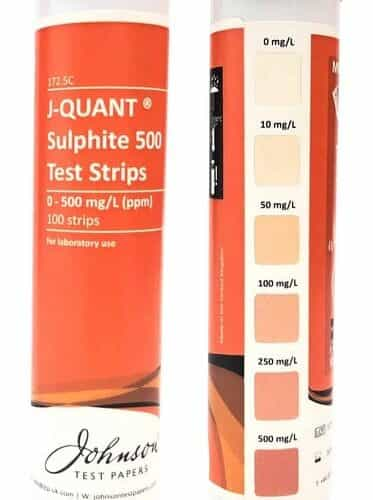
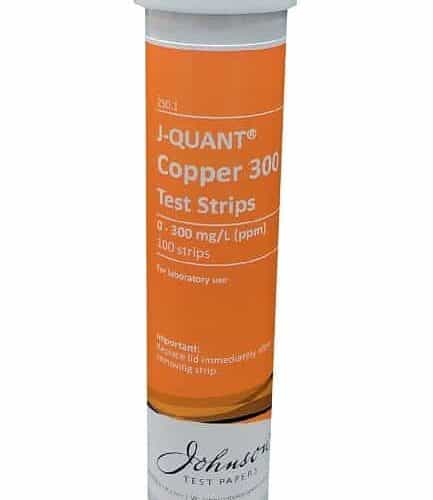
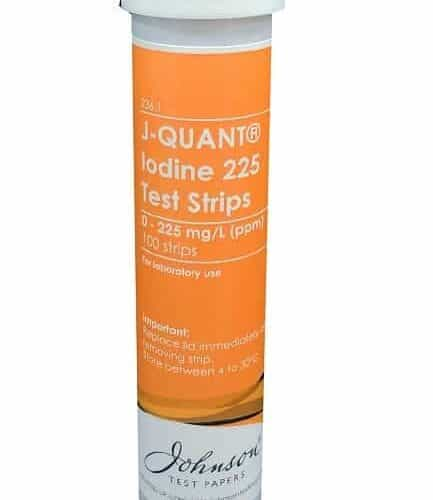

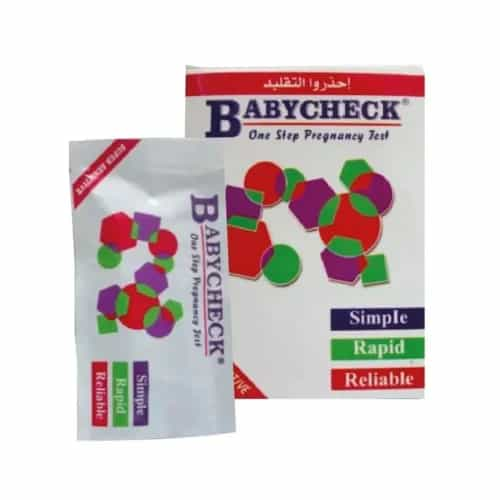

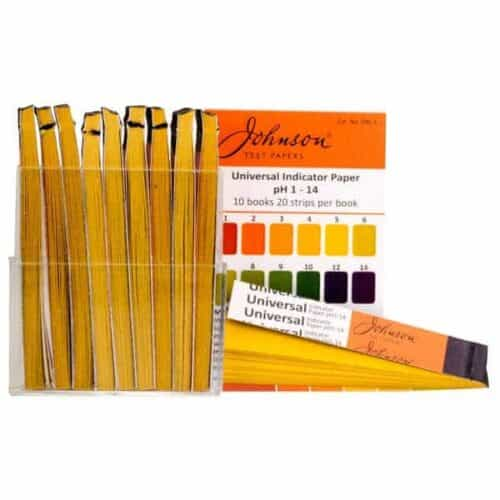
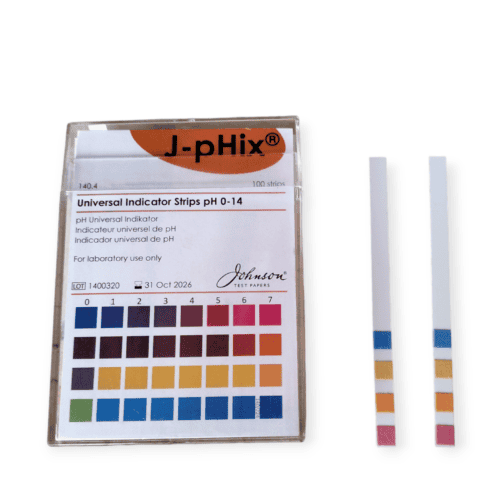
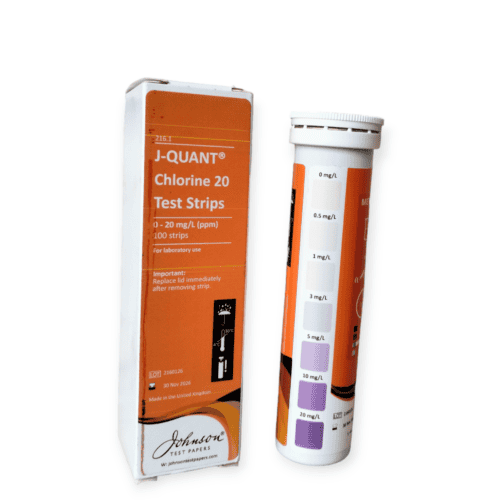
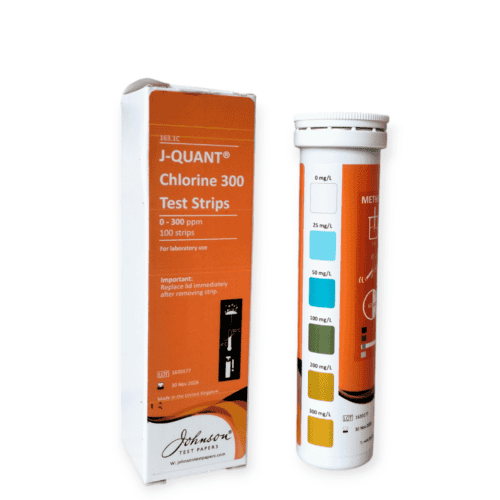


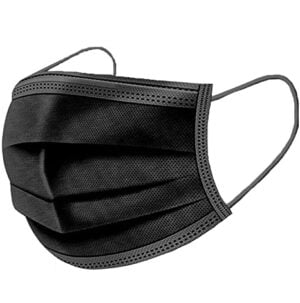
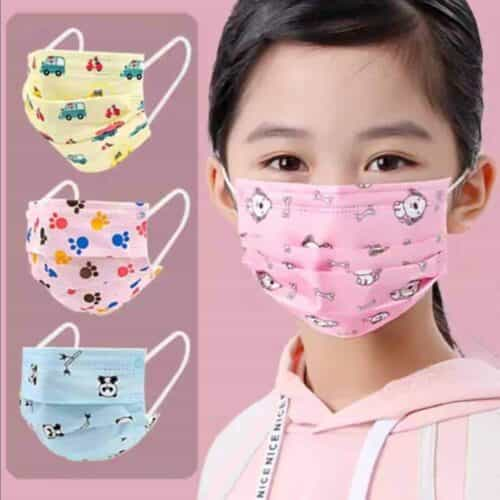

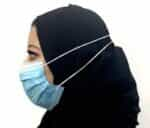

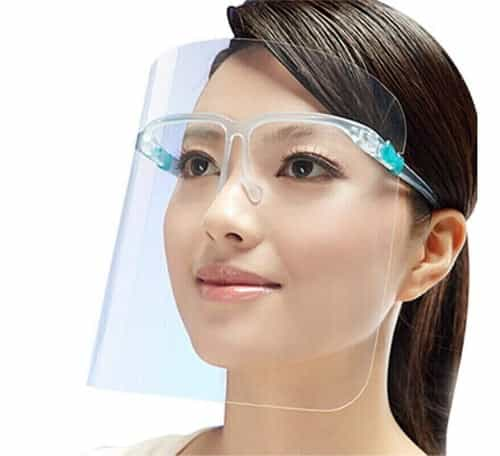


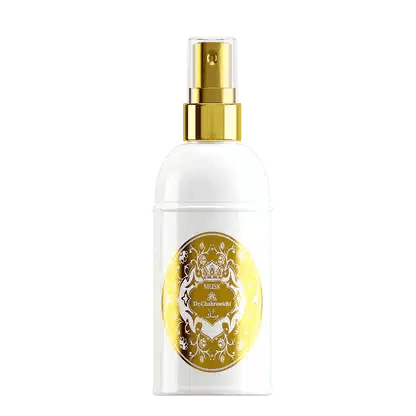

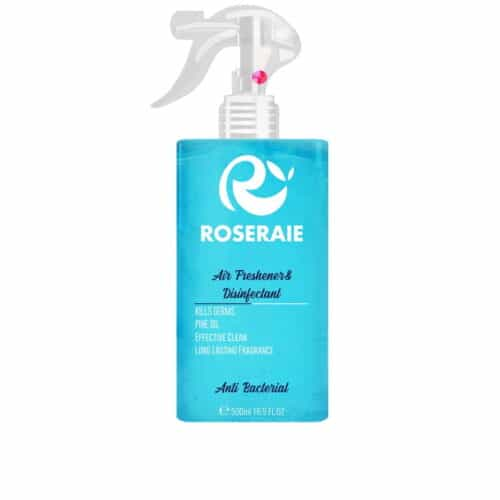
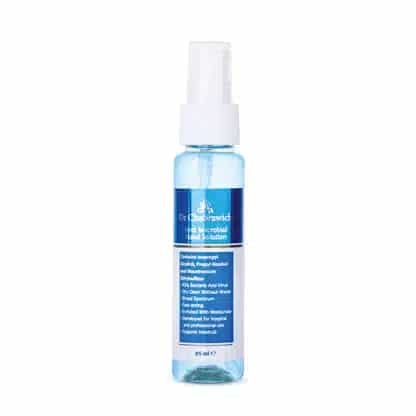
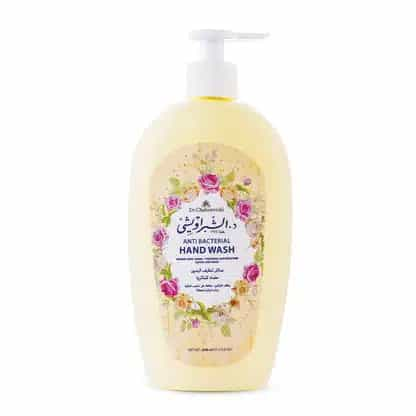
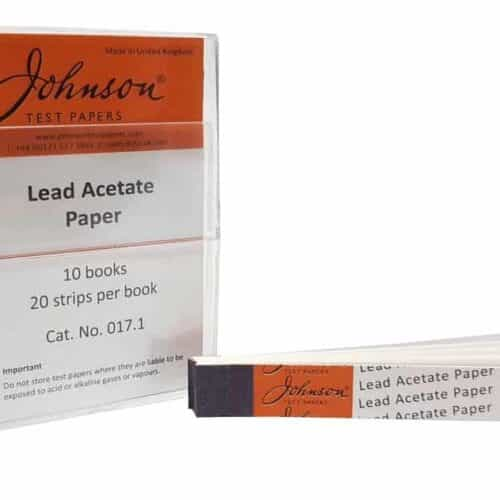
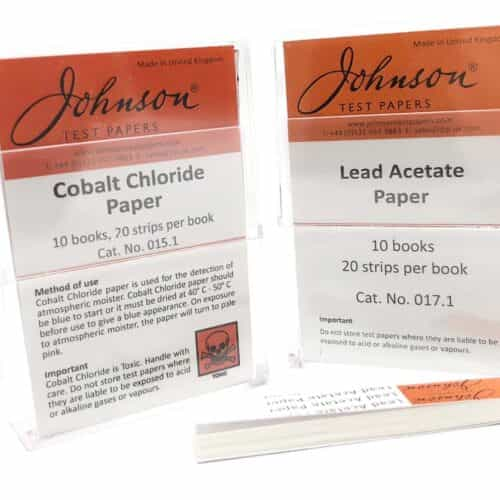
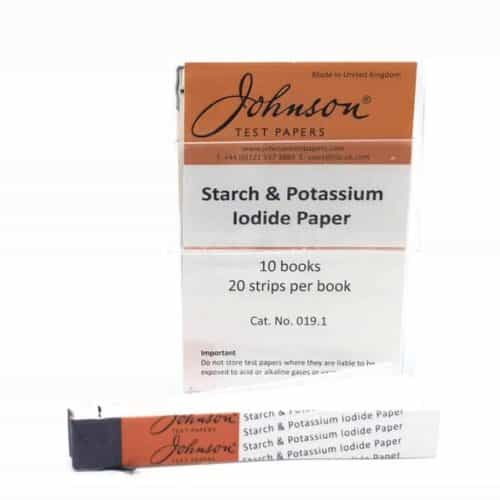
المراجعات
مسح المرشحاتلا توجد مراجعات بعد.